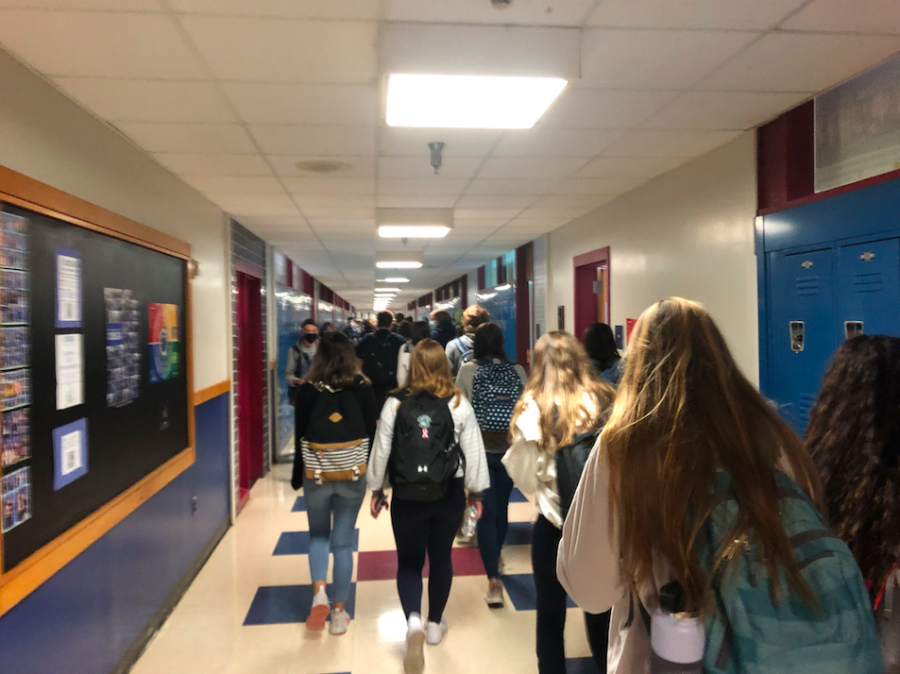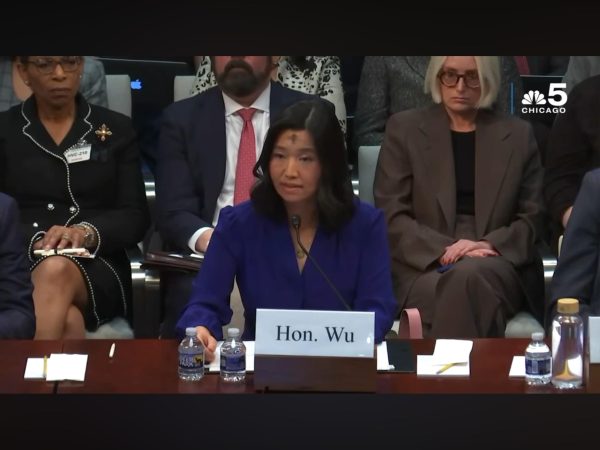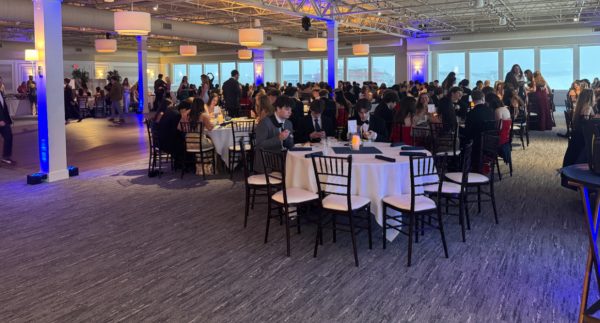The Flawed Remote Model
Students in the High School ignore COVID regulations in the tight hallways of the school, something Remote Students seek to avoid.
Every day this week, I have gotten up at 7:30, sat down at my desk, and stayed there until 2:20. During the nearly seven hours at my desk, I am barely given enough time to eat breakfast or lunch, and going outside is not even an option. When my final zoom ends, I am so mentally exhausted that I go right back to sleep, waking up from my nap just in time to eat dinner and finish my homework to prepare for the next day. This monotonous and painful experience is familiar to many students at Hamilton Wenham.
“I love remote, but I have way too many zooms every day. I basically spend the entire day either zooming or sleeping,” stated Ian Castracane, a junior at Hamilton Wenham High School.
The High School offers the remote model of learning as the alternate option to the hybrid model. As the name suggests, Remote students learn and attend classes from their houses, never having unnecessary contact with peers or school staff. For students concerned for their own health or the health of at-risk family members, the remote model is obviously the top choice.
However, in its current form, the remote model focuses entirely on a full schedule of zooms. The Massachusetts Department of Elementary and Secondary Education states, “districts and schools operating a remote learning model must provide synchronous instructions each school day; and must provide at least 40 hours of synchronous instructions over a 10-school day period,”
The effort to enforce complete schedules full of zooms is an attempt to have the Remote model compare to a fully in-person model in terms of learning. However, this attempt is misguided as it does not acknowledge the differences which prevent zooms from being the same as in-person classes.
Zooms may be effective in small amounts, maybe every other class, in order to check-in and foster a connection between students and their teachers; having zooms every block of every day is overwhelmingly damaging. The exhausting effects of being in online classes all day leads students to lose focus and retain less information.
School psychologist Dr. Brittany Stevens stated to The Lynbrook Epic, “Overstimulation creates exhaustion. It’s overstimulating for our brains to be on electronics. It’s not what our brains are evolved to be awesome at.”
Students in the remote model of learning are placed at a disadvantage in regards to learning to their Hybrid peers, something Maggie Firicano, a Junior at the High School, acknowledged, “Given the workload, I liked being remote and having more time, but I learned better in the hybrid setting. Definitely, I’ll go back to hybrid.”
The current Remote and Hybrid system forces students to sacrifice their personal safety and health in order to have the best learning experiences, an unfair burden during a National Pandemic.
Rather, the remote learning model needs to change to prioritize zooms less and provide teachers and students with more freedom to develop their own independent learning opportunities.
“I think that if teachers would videotape their lessons and post them rather than have us zoom in and not have a clear plan or have us do all the work on our own, I think it would be the closest to us learning in person as possible” stated Maggie.
Evan, another Junior, would agree that the way to forward for the remote model of learning would be providing teachers with more agency, “I think loosening the restrictions on zooms will definitely help like giving teachers a bit more freedom on how to teach their class and how to do better because right now they are kinda forced to zoom in. If you gave teachers more freedom to teach the way they want to and the amount they think is necessary, it will be a lot better.”
In order to make the weighty decision between the Hybrid and Remote models of learning fair for all students, the State Zoom requirements need to change and become more flexible on a class by class basis.
Luke McMahon is a Junior at Hamilton Wenham and a Staff Writer for The General Consensus. Luke had always been interested in Journalism and this class...












